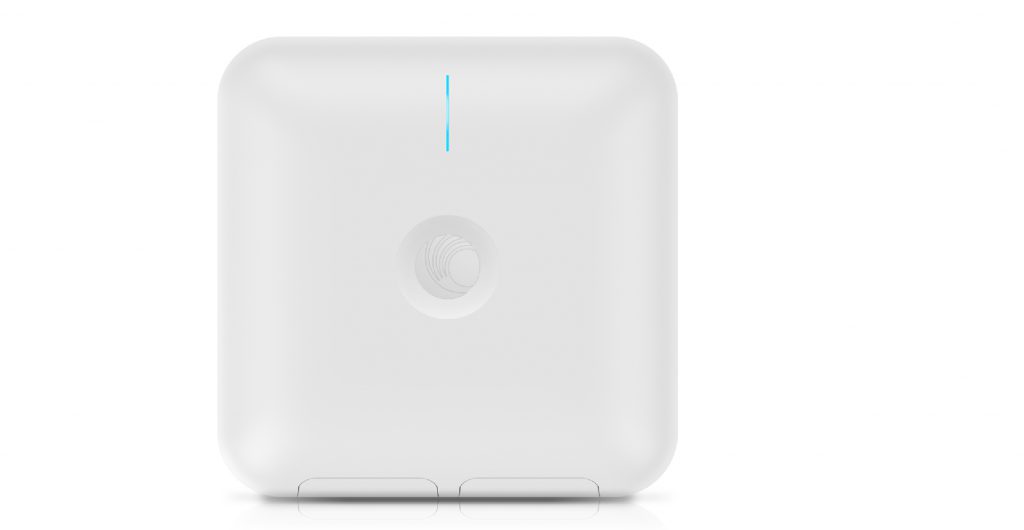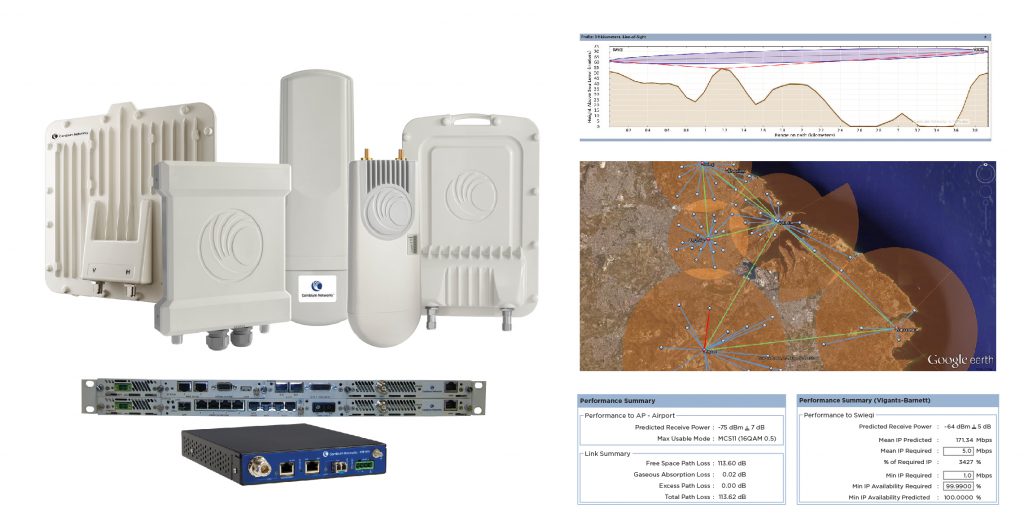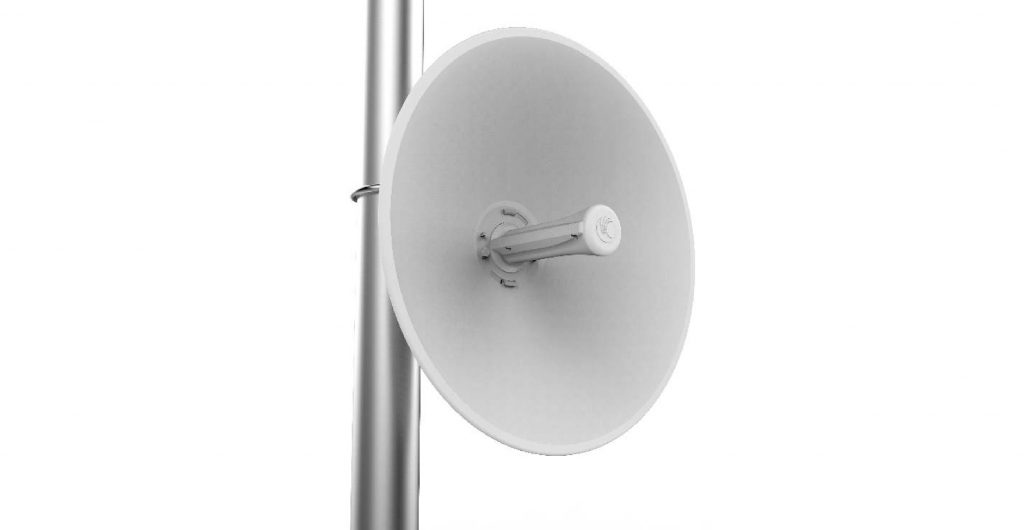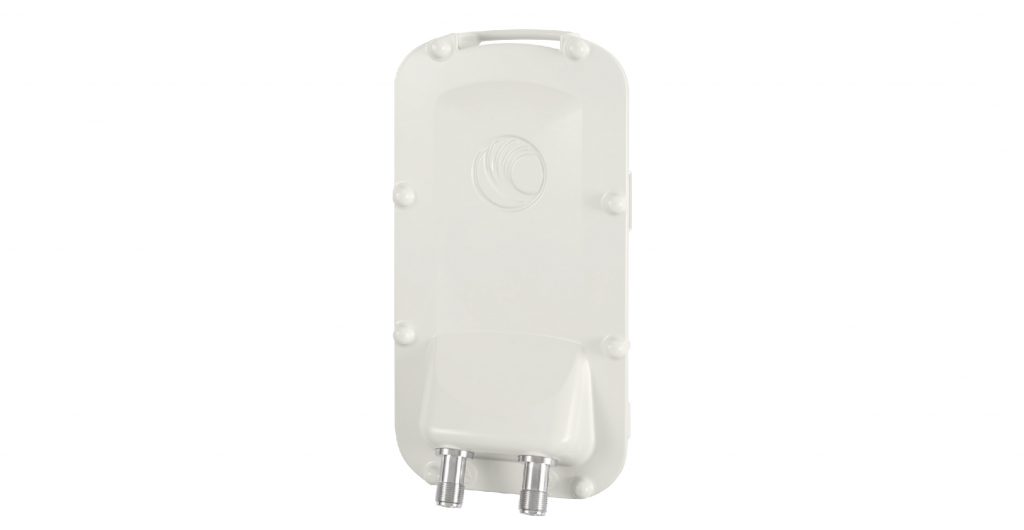Cambium Networks PTP 820C
Licensed Microwave Radio
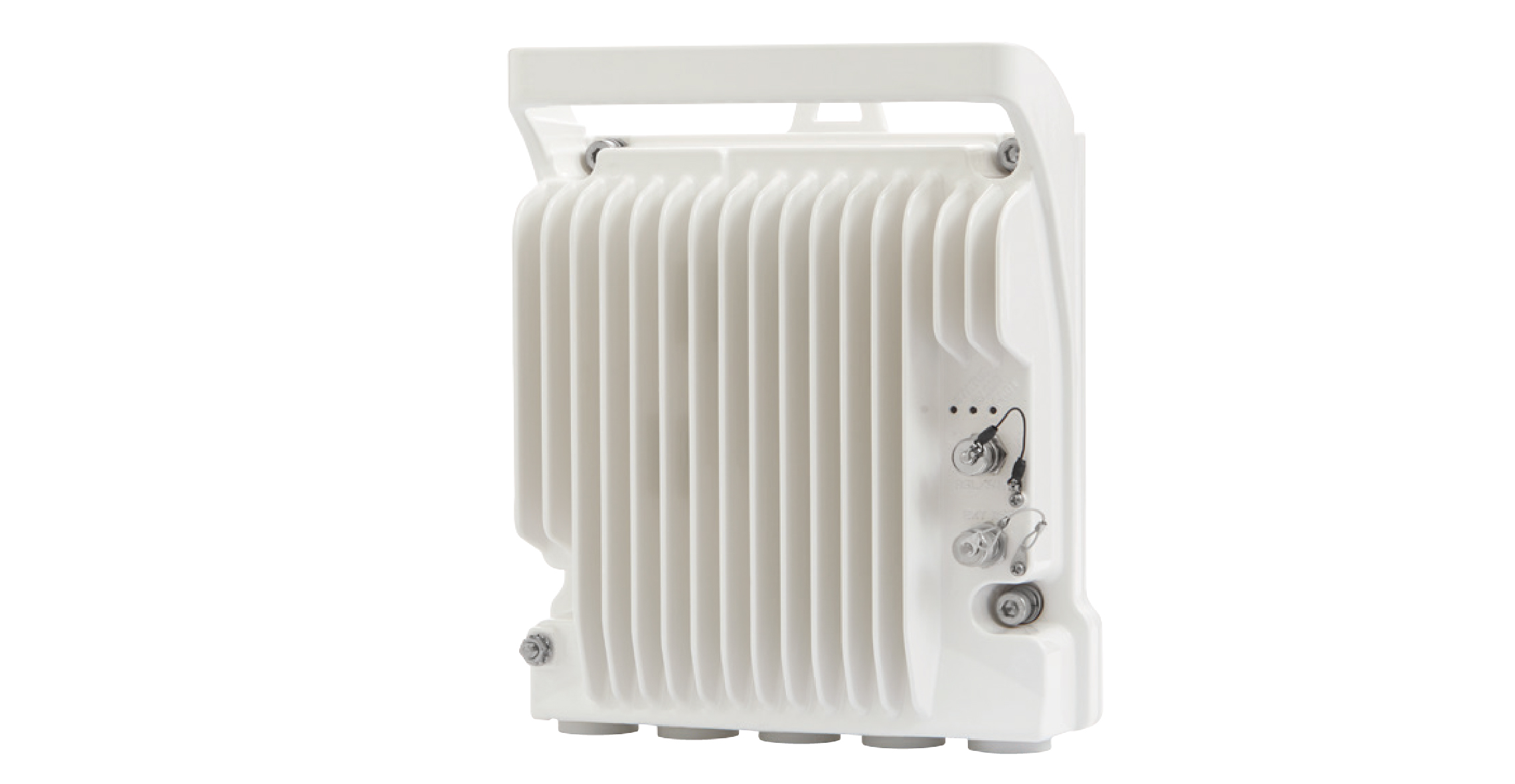
All-Outdoor / Multi-Core
RADIO
Supported Frequency Range
- 6-38 GHz
Configurations
- 1+0 to 4+0, 1+1/2+2 HSB, E/W, 1+0 SD, 2+2 SD
Radio Features
- Multi-Carrier Adaptive Bandwidth Control (up to 2+0)
- Protection: 1+1/2+2 HSB
- High spectral utilization: QPSK to 2048 QAM w/ACM
- XPIC
- 2×2 / 4×4 MIMO
SYNCHRONIZATION
Synchronization Distribution
- Sync Distribution over any traffic interface (GE/FE)
- Sync-E (ITU-T G.8261, G.8262)
- SSM/ESMC Support for ring/mesh applications (ITU-T G.8264)
- Sync-E Regenerator mode, providing PRC grade (ITU-T G.811) performance for
smart pipe applications.
IEEE-1588
• Optimized Tran
ETHERNET
Ethernet Interfaces
- Traffic Interfaces – 1 x 10/100/1000Base-T (RJ-45) and 1x1000base-X (SFP) or 10/100/1000 Base-T (electrical SFP)
- Management Interface – 1 x 10/100 BaseT (RJ-45)
- Optical SFP Types – Optical 1000Base-LX (1310 nm) or SX (850nm)
Note: SFP devices must
Ethernet Features
- MTU – 9600 Bytes
- Quality of Service
- Multiple Classification criteria (VLAN ID, p-bits, IPv4, DSCP, IPv6 TC, MPLS EXP)
- 8 priority queues
- Deep buffering (configurable up to 64 Mbit per queue)
- WRED
- Hierarchical QoS – high service granularity*
- P-bit marking/remarking
- 4K VLANs
- VLAN add/remove/translate
- Frame Cut Through – controlled latency and PDV for delay sensitive applications
- Header De-Duplication – Capacity boosting by eliminating inefficiency in all layers (L2, MPLS, L3, L4, Tunneling – GTP for LTE, GRE)
- Network Resiliency – G.8032 and Multiple Spanning Tree Protocol (MSTP)*
- Ethernet OAM – EFM (IEEE 802.3ah), CFM (IEEE 802.1ag), ITU-T Y.1731*
STANDARD
MEF
- Carrier Ethernet 2.0 (CE 2.0)**
Supported Ethernet Standards
- 10/100/1000base-T/X (IEEE 802.3)
- Ethernet VLANs (IEEE 802.3ac)
- Virtual LAN (VLAN, IEEE 802.1Q)
- Class of service (IEEE 802.1p)
- Provider bridges (QinQ – IEEE 802.1ad)
- Link aggregation (IEEE 802.3ad)
- Auto MDI/MDIX for 1000baseT
- RFC 1349: IPv4 TOS
- RFC 2474: IPv4 DSCP
• RFC 2460: IPv6 Traffic Classes
Standards Compliance
- EMC: EN 301 489-1, EN 301 489-4, Class B (Europe), FCC 47 CFR, part 15, class B (US), ICES-003, Class B (Canada), TEC/EMI/TEL-001/01, Class B (India)
- Surge: EN61000-4-5, Class 4 (for PWR and ETH1/PoE ports)
- Safety: EN 60950-1, IEC 60950-1, UL 60950-1, CSA-C22.2 No.60950-1, EN 60950-22, UL 60950-22, CSAC22.2.60950-22
- Ingress Protection: IP66-compliant
- Storage: ETSI EN 300 019-1-1 Class 1.2
- Transportation: ETSI EN 300 019-1-2 Class 2.3
TECHNICAL SPECIFICATION
Mechanical Specifications
- Dimensions: 230mm(H), 233mm(W), 98mm(D), 6.5kg
- Pole Diameter Range (for Remote Mount Installation): 8.89 cm – 11.43 cm
Environmental Specifications
- -33°C to +55°C (-45°C to +60°C extended)
Power Input Specifications
- Standard Input: -48 VDC
- IDU DC Input range: -40 to -60 VDC
Power Consumption Specifications
- Maximum Power Consumption (2+0 Operation) 6 GHz: 65W; 7 GHz: 75W; 11 GHz: 65W; 13-15 GHz: 55W; 18-24 GHz: 48W; 26-38 GHz: 55W
PoE Injector Mechanical Specifications
- Dimensions – 134mm(H), 190mm(W), 62mm(D), 1 kg
PoE Injector Environmental Specifications
- 33°C to +55°C (-45°C to +60°C extended)
PoE Injector Power Input Specifications
- Standard Input: -48 or +24 VDC (Optional)
- DC Input range: ±(18/40.5 to 60) VDC (+18VDC extended range is supported as part of the nominal +24VDC support)
PoE Injector Interfaces
- GbE Data Port supporting 10/100/1000Base-T
- Power-Over-Ethernet (PoE) Port
- DC Power Port –40V to -60V (a PoE supporting two redundant DC feeds each supporting ±(18-60)V is available)



 ไทย
ไทย